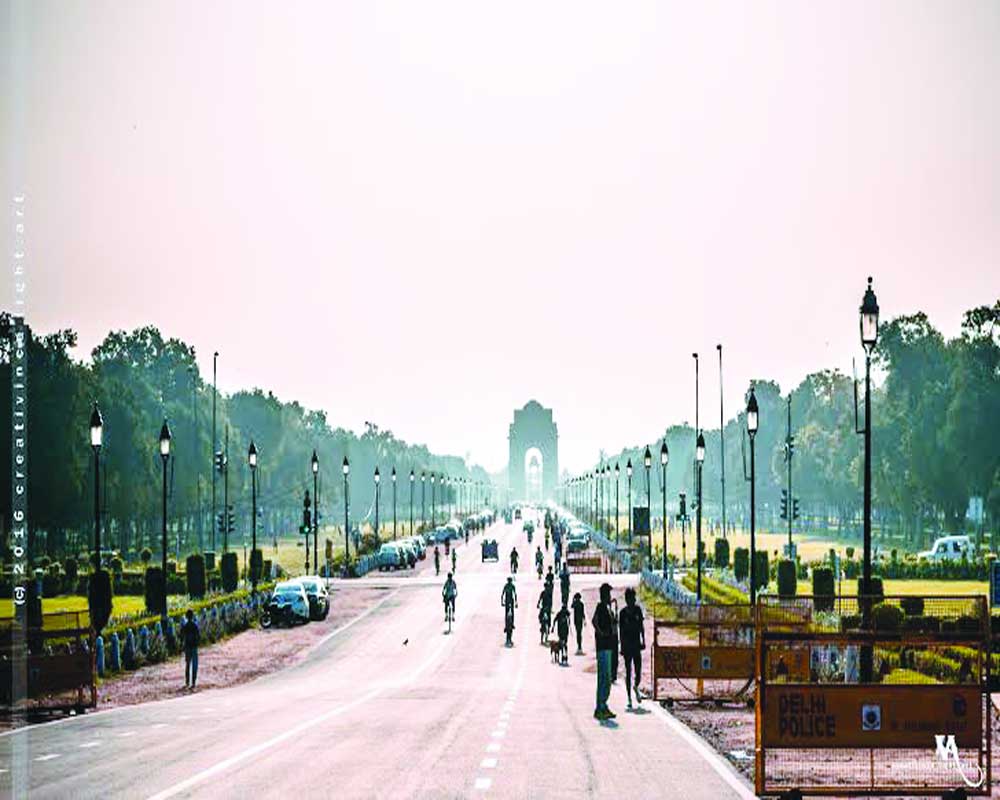Repairing and rejigging heritage structures is one thing, changing skylines quite the other
When the glass Pyramid came up in the courtyard of the Louvre Museum, ostensibly to serve as a central conduit for a more functional visitor movement, the then French President François Mitterrand was lambasted for creating “an architectural joke, an eyesore, an anachronistic intrusion of Egyptian death symbolism in the middle of Paris, and a megalomaniacal folly.” Parisians still have mixed feelings about the new-age intrusion, which has allowed more utilitarian and pedestrianised access to art besides increasing footfalls. But the oddity of its existence was such that critics and conservationists compelled the architects to tone down on drama, keep much of the rejig of the Louvre’s internal map underground and stay away from the surrounding classical architecture. Mitterrand, an avid art lover, was thinking about keeping the Louvre relevant for generations than sealing a political legacy. However, the real intent of the argument that Lutyens’ Delhi needs a makeover, particularly the central vista of the Rajpath, to create more spaces for Ministry offices and freeing up more citizen-friendly spaces, is entirely political and in no way cultural or futuristic. Tradition’s co-existence with modernity is encoded in our DNA and Delhi is the best testimony, where each successive ruler has sedimented through relics and monuments. And Delhiites have never denied heritage its place — Rajput, Islamic, European or colonial — making it a part of their living history, one where Lutyens’ Delhi is a key chapter. Talking of the central vista and the domed buildings around it, do we really need to tamper with the elegance and classicism of design here? The green pavilions, perches, cupolas and the islands are the only democratic spaces where citizens can move and roam free, catching the afternoon sun in the middle of winter and the gentle breeze of a summer evening. No kiosk or retail space is needed for it is precisely to escape these that Delhi families assemble here.
Besides, being the first stretches to be locked down for security around Republic and Independence Days, they are anyway sanitised and cannot ever be a porous event space like Washington’s National Mall. Redevelopment wouldn’t necessarily mean more freedom to the masses. Considering the India Gate and now the war memorial are a tribute to martyred soldiers no less, do we need to scream our triumphalism and identity any louder with an Eiffel tower-like structure? Shouldn’t the Government be wiser to leave a legacy of policy and governance instead? Repurposing administrative offices within the shell of an existing facade and rejigging interiors are the done thing. But to change the skyline is quite the other. Agreed, there may be an increasing demand for land in the cities and the size of the Government means that its bureaucracy needs to be accommodated. Does that mean Lutyens’ bungalows should be torn down indiscriminately without attempting a solution within the original plan? Cannot some Government accommodation be relocated to areas where vertical structures are the norm than the exception? The Rajpath has been our ceremonial pivot, providing a monumental, dignified and symbolic setting for governmental structures, museums and national memorials. Attempting to change it for no pressing reason, therefore, is like marginalising and eroding its place-based identity. Simply because of its historicity as a power statement. One that the current regime wants to overlay with its own imposition of a Bharat Parv, as if we never had one through millennia. Prime Minister Narendra Modi doesn’t quite like the “Lutyens’ world” and the power structures embedded in it. “For me, everything is about the people of India,” he had said. But in the name of breaking elitism and freeing up space for people, one cannot justify political point-scoring. Or even the political economy it will generate — the project is expected to run into multi-crore tenders. There are fruits of preservation; they serve as reminders of what was and where we need to go. There are only ruins of demolition, forcibly reconstructing the past on wobbly stubs to suit our ends. Given the secrecy around the makeover project, the least the Government can do is to put a proposed plan to a public vote, keep it transparent, consultative and reasonable and synchronise its character with the aspiration of Delhiites to be citizens of a world heritage city. The city’s application, submitted to the Unesco in 2013, lists Lutyens’ Bungalow Zone (LBZ) along with Shahjahanabad (old Delhi) as the rationale for seeking the tag. That sure will have a longer legacy than proving a point for BJP’s manifesto of 2024, the deadline of the project.


























